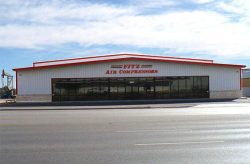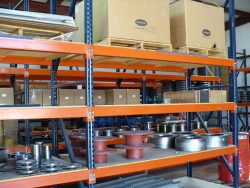What To Consider When Selecting The Best Air Host
No one enjoys lifting heavy objects, but this is more than likely an everyday occurrence if you’re working in an industrial environment. Why not save your team some time and the health of their back muscles by using air hoists instead? There are many different types of hoists, but all are durable and versatile and can be used for many different applications, making them worth the cost. In this post, we walk you through the factors to consider when selecting air hoists and the air hoist best practices needed to ensure your air hoist stays in top condition.
Factors to Consider When Selecting Air Hoists
What weight will you be lifting?
- Manual hoist: You want the rated capacity to be as high as the weight of the heaviest load and no higher than the rated capacity of the overhead structure from which the hoist will be suspended.
- Electric or pneumatic hoist: Here, you need to consider the weight of the heaviest load and determine the Mean Effective Load and apply it to the factor of .65.
Best suspension type for you
Do you need your air hoist to be suspended from a fixed spot or mounted on a trolley? To mount your air hoist on a trolley, it will need to be done with a top hook or mounting lug. You can choose from rigid or articulating trolleys that are either the type you can push, have hand gears, or are motor-driven.
Think about lift, reach, and headroom
These three, closely-related parameters can help your selection process.
- Lift: The length of lift is the distance the load hook can move between its fully lowered and fully raised positions.
- Reach: The difference in elevation between the hoist suspension point and the hook saddle in its lowest position.
- Headroom: The distance from the hoist suspension point and the fully raised hook saddle.
What lifting speed will you need?
What determines the torque needed for air hoists? The weight of the load, the required lifting speed, and hoist gear ratio. Remember that higher horsepower motors can add to the hoist’s size, weight, cost, and power consumption. So, if you need long lifts or shorter lifts but with a high volume of cycles in a short amount of time, you should consider faster lifting speeds.
Consider your work area’s dimensions
How big is your work area? This is an essential consideration when selecting air hoists. Have a look at the dimensions of the area where you would like to set up your hoist. Take into account issues such as headroom clearance, side clearance along the length of the crane beam, and end approach. End approach relates to the ability to center the hoist over the load and is vital.
What operation type do you need?
- Manual hand chain hoists: These are very well priced, so if you don’t need to use your air hoists every day, they are a good choice. Also great for low capacities and short lift height.
- Electric or pneumatic hoists: If you’re looking at projects that require heavy-duty cycles, high capacities, and long lifts, this is a good choice. They offer faster lifting speeds and are ergonomic.
- Air hoists: For long lifts or high duty cycles where electric power is not an option, these are a good option. They use a large volume of compressed air for operation and offer an unrivaled run time capability. These are also good in instances where flammable gases or dust are present.
- Electric hoists: If you have enough electric power available, these are a popular choice. They are lower in price than pneumatic hoists, don’t need an air compressor, and are quieter than air hoists. You can also add on equipment that can make them suitable for use in hazardous areas.
Air Hoist Best Practices
Air-Source: Before getting started, check your air pressure and ensure that you have adequate flow. When you know the quality of your supplied air, you can ensure your operation will run smoothly. And if you find any choke points, supplement them with an air compressor if necessary.
Work area: If your environment is particularly dusty, it may pose a problem with your pendant controls. Any dust and debris may clog up the buttons, causing possible loss of control over your operation. Rather consider a rope control hoist for better reliability and accuracy movement of your load.
Humidity: In damp and humid work environments, it’s best to add a separate air filter or dryer. Particles and moisture can cause your hoist’s internal components to rust and corrode. A filter or dryer will dehumidify and clean the air running through your system, negating any possible downtime.
Oilers and stoppers: An inline oiler and dirt stopper offer a last line of defense for your hoist. They can keep unwanted debris from the inner workings of your hoists, ensuring your hoist suffers no adverse air quality effects. The oiler also keeps components lubricated and happy.
Say no to shock loading: Working slowly and carefully is critical with hoists. Shock loading places undue stress on the load’s lifting points and overloads your system. It all comes down to planning. Calculate the total laid to make sure your beam, clamp, and hoist can handle the load. Keep control of your load to avoid preventable accidents.
Looking for New Industrial Equipment?
If you are looking for advice on new industrial equipment such as air hoists, contact Fitz Equipment. Fitz Equipment manufactures parts for torque converters and specialty machine parts with over 50 years of dependable, fast, and friendly service. We may have expanded, but one thing hasn’t changed. It is still a family-owned business with a commitment to superior customer service.




